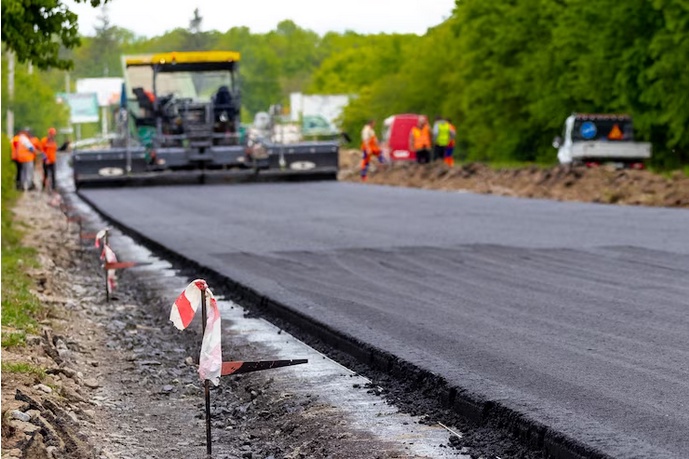Road safety is a paramount concern in transportation infrastructure, and it encompasses a wide array of factors. While vehicle design, traffic management, and driver behavior are often in the spotlight, one crucial yet often overlooked aspect of road safety is highway drainage design. Effective drainage systems play a pivotal role in mitigating risks and ensuring safe road conditions. In this comprehensive guide, we will delve into the significance of highway drainage design in promoting road safety, without emphasizing any specific company or using section divisions.
Understanding Highway Drainage Design
Highway drainage design is the process of planning, designing, and implementing a system to manage the flow of water from and around roadways. This includes rainwater, stormwater, and groundwater. The primary goal of highway drainage design is to minimize the adverse effects of water on road safety, infrastructure, and the environment. It involves several key elements:
-
Surface Drainage: Ensuring efficient runoff of rainwater from the road surface to prevent hydroplaning and reduce the risk of accidents.
-
Subsurface Drainage: Managing groundwater to prevent weakening of the roadbed and potential subsidence.
-
Erosion Control: Preventing soil erosion near roadways, which can lead to unstable road conditions and accidents.
-
Flood Management: Designing drainage systems to handle heavy rainfalls and prevent flooding on the road, which can be particularly hazardous.
The Crucial Role of Highway Drainage Design in Road Safety
-
Preventing Hydroplaning: When water accumulates on road surfaces, it increases the risk of hydroplaning, where a vehicle's tires lose contact with the road due to a film of water. This can result in loss of control and accidents. Proper highway drainage design helps quickly remove surface water, reducing the occurrence of hydroplaning incidents.
-
Enhancing Visibility: Water accumulation on road surfaces can lead to reduced visibility due to splashes and mist. This poses a significant danger, especially during heavy rain. Effective drainage design minimizes visibility issues and contributes to safer driving conditions.
-
Minimizing Corrosion: Prolonged exposure to standing water can lead to the deterioration of road infrastructure, including bridges and tunnels. Highway drainage systems prevent corrosion and structural damage, thus preserving the integrity of the roadway.
-
Preventing Landslides: In areas prone to landslides or soil erosion, proper drainage design is crucial to ensure that water does not saturate the soil, which can lead to slope failures and landslides. Such incidents can block or damage roadways and pose severe safety hazards.
-
Flood Mitigation: Heavy rainfall can result in flash floods that inundate roadways. A well-designed drainage system is instrumental in preventing these floods, allowing roads to remain passable and preventing potential accidents.
-
Ice and Snow Management: In regions with cold climates, the drainage system plays a critical role in managing melted snow and ice runoff. Effective drainage design helps prevent icy patches on road surfaces, reducing the likelihood of accidents.
-
Structural Integrity: Effective drainage prevents the saturation of the roadbed, which can lead to weakened structural integrity. Ensuring roadbed stability is vital for safety and preventing accidents caused by road deterioration.
-
Reducing Aquaplaning: Aquaplaning occurs when a vehicle's tires lose traction due to the presence of water on the road surface. Proper drainage systems minimize aquaplaning incidents, enhancing road safety.
Factors to Consider in Highway Drainage Design for Road Safety
Several factors must be considered in highway drainage design to maximize road safety:
-
Traffic Volume: The design should account for the volume and types of vehicles using the roadway to ensure efficient drainage even during peak traffic periods.
-
Geographic Location: The local climate and geography play a significant role in drainage design. Coastal areas, mountainous regions, and flat terrains may require different drainage approaches.
-
Weather Patterns: Understanding local weather patterns is crucial for designing systems that can handle varying levels of precipitation and potential storms.
-
Maintenance Accessibility: Drainage systems should be designed for ease of access and maintenance to ensure they remain effective over time.
-
Environmental Impact: The drainage design should take into account potential environmental impacts, including the protection of nearby water bodies from pollution and habitat disruption.
-
Budget Constraints: While safety is paramount, the design should also be cost-effective. Balancing safety measures with budgetary considerations is essential.
Conclusion
In conclusion, highway drainage design plays an indispensable role in road safety. Effective drainage systems prevent accidents related to hydroplaning, maintain visibility, and preserve road infrastructure. Additionally, they reduce the risk of landslides, flooding, and aquaplaning, all of which can have severe consequences for drivers and road users.
To ensure the safety of roadways and those who use them, it is imperative that highway drainage design is prioritized and executed with expertise. By considering factors such as traffic volume, geographic location, weather patterns, maintenance accessibility, environmental impact, and budget constraints, designers can create drainage systems that promote road safety. Ultimately, highway drainage design is not only about managing water; it's about protecting lives and safeguarding the vital infrastructure that connects us all.


No comments yet